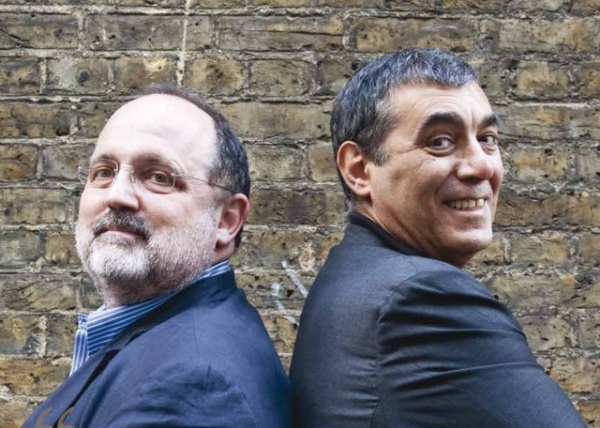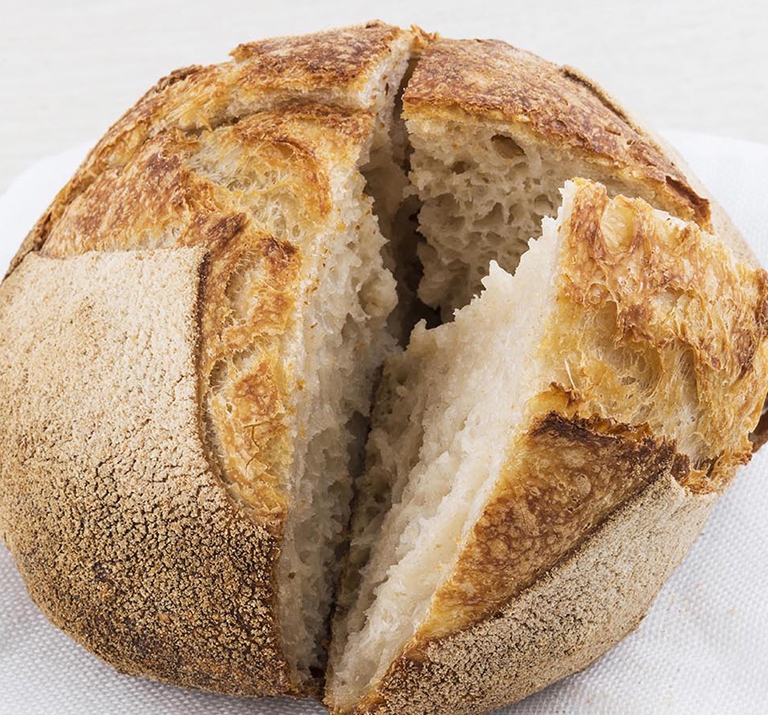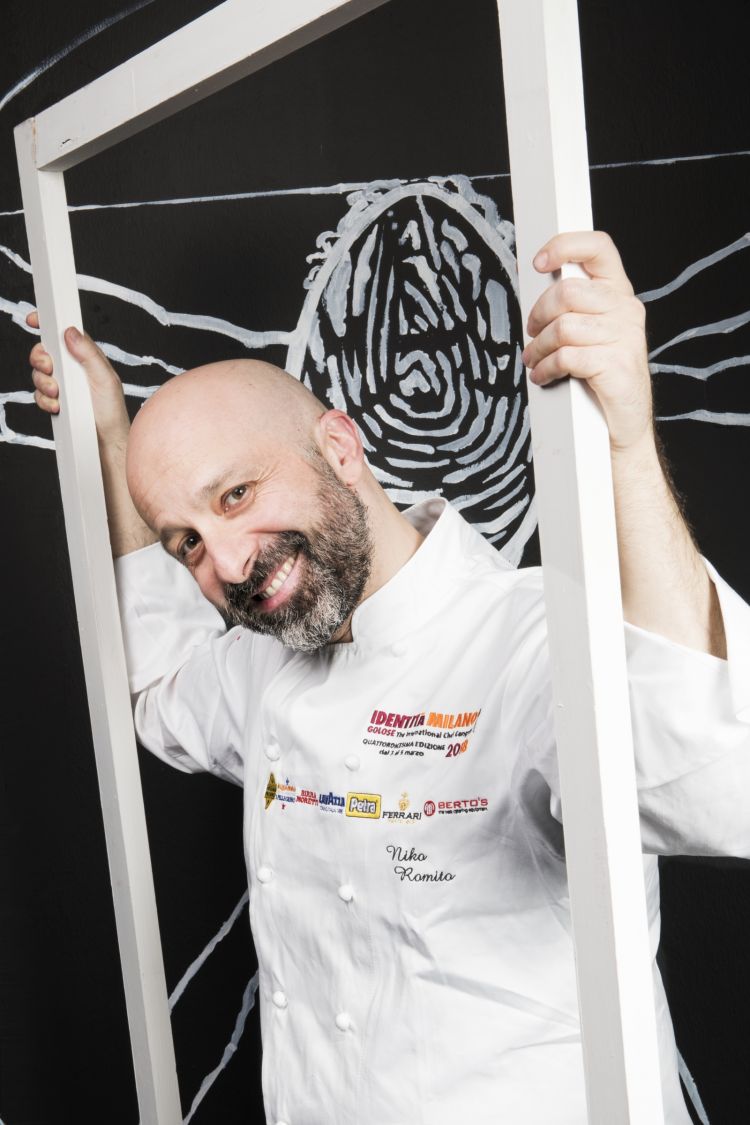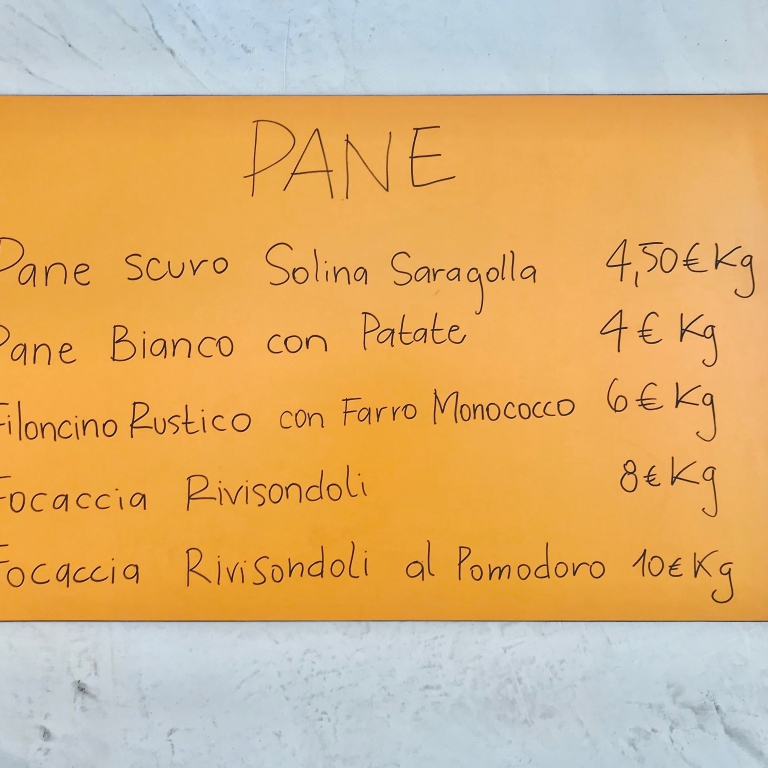Bread as the emblem of Identità Milano 2019. Some time ago, Carlin Petrini quoted whathe had found written on the sign of a Russian café: "Bread is the kinder and most welcoming word. Always write it with a capital letter, like your name". We’ll follow his advice.
Bread, a universal legacy of community, of brotherhood («There are people around the world that are so hungry, that God could only appear to them except in the form of bread». Gandhi), was of course adopted by Christian culture. Bread as a sign of identity, and therefore, of Identitàas well. Not just an ordinary Bread, of course, but the bread made by Niko Romito. You can see it above, in the photo from Brambilla-Serrani.

Paolo Marchi and Claudio Ceroni: together they created Identità Golose, the first congress in 2005, reaching its 15th edition from the 23rd to the 25th of March
«Every year, we choose a dish to represent the congress with a twofold goal – says
Paolo Marchi, the creator and curator of
Identità Milano – The first, is to use an image to highlight the theme of the congress. In this case,
The Human Factor: Building New Memories. And it’s obvious this food has an evocative function that takes part in our history and yet – and this is the second goal – it has been presented for some time with a new approach and dignity by a chef like
Niko Romito», recuperating its central role in the Mediterranean culture: “companatico” is everything that comes with bread, and not vice versa. That is to say that Bread is the pillar, the rest comes next (
cumpanatĭcum from Medieval Latin, i.e.
cum pane, with bread).
Marchi: «So the choice of the emblem dish is also a way of paying tribute to the chefs we most appreciate, in whose work each year the theme of the congress is best identified. And, if we speak of Building New Memories, we had of course to refer to Romito: more than others, he immediately shows a disarming simplicity, but also induces you to look for what is hidden behind its accomplishment» («Simplicity is a point of arrival. It’s a work on complexity, aiming for clean flavours», Romito told us here).

Bread by Niko Romito (photo by Brambilla-Serrani)
So
Romito’s Bread was chosen, but it could have been his fried chicken, «the convivial Sunday meal par excellence. This is
Niko: nobody can say they cannot understand his cuisine». Who could not feel at ease, in front of a warm and fragrant loaf of bread? «Yet behind this veil of essentiality, behind the pure linearity of his dishes, there are deep fine dining concepts. Very often, fine dining is identified in the wrong way. We think of acrobatic, sumptuous procedures.
Romito proves instead that it can be something very familiar, something which we can perceive as almost "ordinary"». It is indeed like a test, «it allows you to understand how important the idea of a chef is, that is to say his reasoning. And as a consequence it gives us an idea of his true value».
"PANE: the emblem-product of Romito’s philosophy, the result of a thorough research on flour, dough and leavening, is at the heart of a new project, which thanks to the intelligent use of the cold chain will make this bread available in homes, restaurants and shops, in Italy and around the world": this is what’s written on the chef’s website. It’s the evolution of a project that was born a while ago: «I started working with ancient wheat varieties back in 2009, when I was still in Rivisondoli – says the chef – The turning point, however, came in Castel di Sangro, two years later: there, I created a 60 square metre laboratory just for Bread, for the restaurant seating 25 people. It seemed mad, but I’ve always believed in the project». First, Romito presented a specific work on Bread in fine dining. He was the first to serve Bread in the middle of the table, like a course in its own right.
Back in 2016
Niko wrote:
Early in December I went to Copenhagen for a friend’s birthday. (...). I had a tiny suitcase and I didn’t do any shopping so I could bring back home a loaf of bread that had stricken me. It was a bread made by Christian Puglisi (of restaurants Relæ, Manfreds and Bæst), an excellent bread: the dough was both light and creamy, acid, and the crust was nicely toasted. Puglisi’s is not the only bread I’ve fallen in love with, (and there are many more examples in Italy), but it is the most recent case. It had already happened, that I had to make space in my suitcase for bread (once in Rome I forgot two loaves of bread in a taxi, we were trying out that type of bread for breakfast: I tried to recover them, but without luck) and for a long time it has had a prominent role in my restaurant.

Niko Romito at Identità Milano 2018
And then:
We’ll serve a whole loaf: every table will receive a 600-800 gram loaf, cut into 4 pieces. Focaccia di Saragolla, very humid, and made with a special technique (almost like polenta, first cooked, and then leavened) will still be served as a welcome, together with sfoglia croccante and grissini. Then the pagnotta: just one type of bread. It will be served lukewarm: we’ll bake it 40-50 minutes before service. The dough will be made with potatoes and 50/50 0 type flour and 2 type flour from Solina (...). We’ll wait a few minutes before serving the scheduled course, so as to leave guests with just the bread for a while. (...). It can work if the bread deserves it. Bread, in its simplicity, is complex, complete and deep. It will reveal a chef’s real self. It’s simple, yet it’s difficult to make it properly.

Romito’s bread is on sale in his laboratory in Castel di Sangro (photo by Tanio Liotta)
explains: «I’m thrilled that
Identità Milano 2019 wanted my Bread as the emblem dish: this confirms the attention you pay to our work, and the value of the research I’ve conducted on a product that has history, tradition, but is also complex and requires lots of research. We think it’s just flour, water, salt... But you’re either obsessive, and combine these ingredients – and mother yeast – perfectly, or the result won’t be satisfying. If, on the other hand, you make it, you can prove how with just a few seemingly ordinary elements you can create something thrilling and that can have its deserved place in a fine dining restaurant, where everything is either masterful or a mistake». Today, the Bread by
Romito, made in Castel di Sangro, is served not only at
Reale and
Alt, but also at
Spazio in Milan, Rome and Rivisondoli and at
Bulgari in
Milan,
Shanghai,
Beijing and
Dubai.
Niko continues: «There’s something else that makes me happy: in a short time, many other young colleagues have started to pay great attention to Bread, and its central role is now widespread. I only hope this hasn’t happened just because it’s “trendy". I remember how at Reale, the first times when I’d serve just the one hot loaf of Bread, some people would say: "What, is this it? Where’s the bread basket?". People were used to the many small aromatised rolls, and took this change as a negative one». It was a different era, yet it was only a few years ago.
«
My passion for bread? It started in my father’s pastry shop. He was also crazy about leavened products. I started to work with the ancient wheat varieties from Abruzzo, namely Solina and Saragolla. They’re very popular now, but back then, you needed to explain them. Bread is part of our culture. It is almost sacred. When it fell on the ground, my grandfather whoud collect it and kiss it».
(
Niko Romito, from
Tutto Niko Romito in 16 frasi più una,
Identità Golose, 30th January 2018)
Translated into English by Slawka G. Scarso